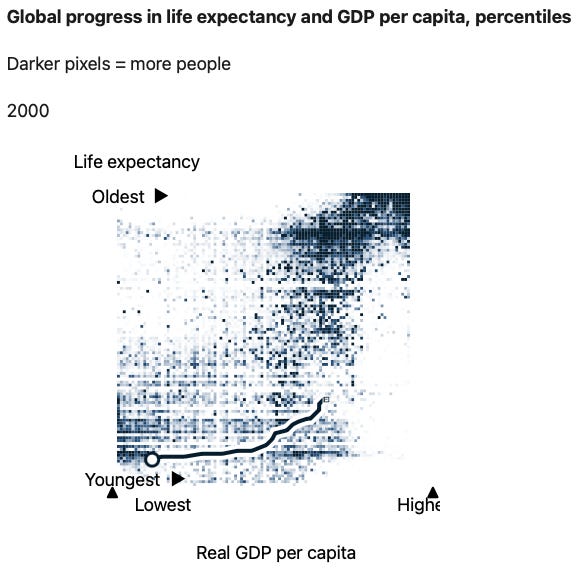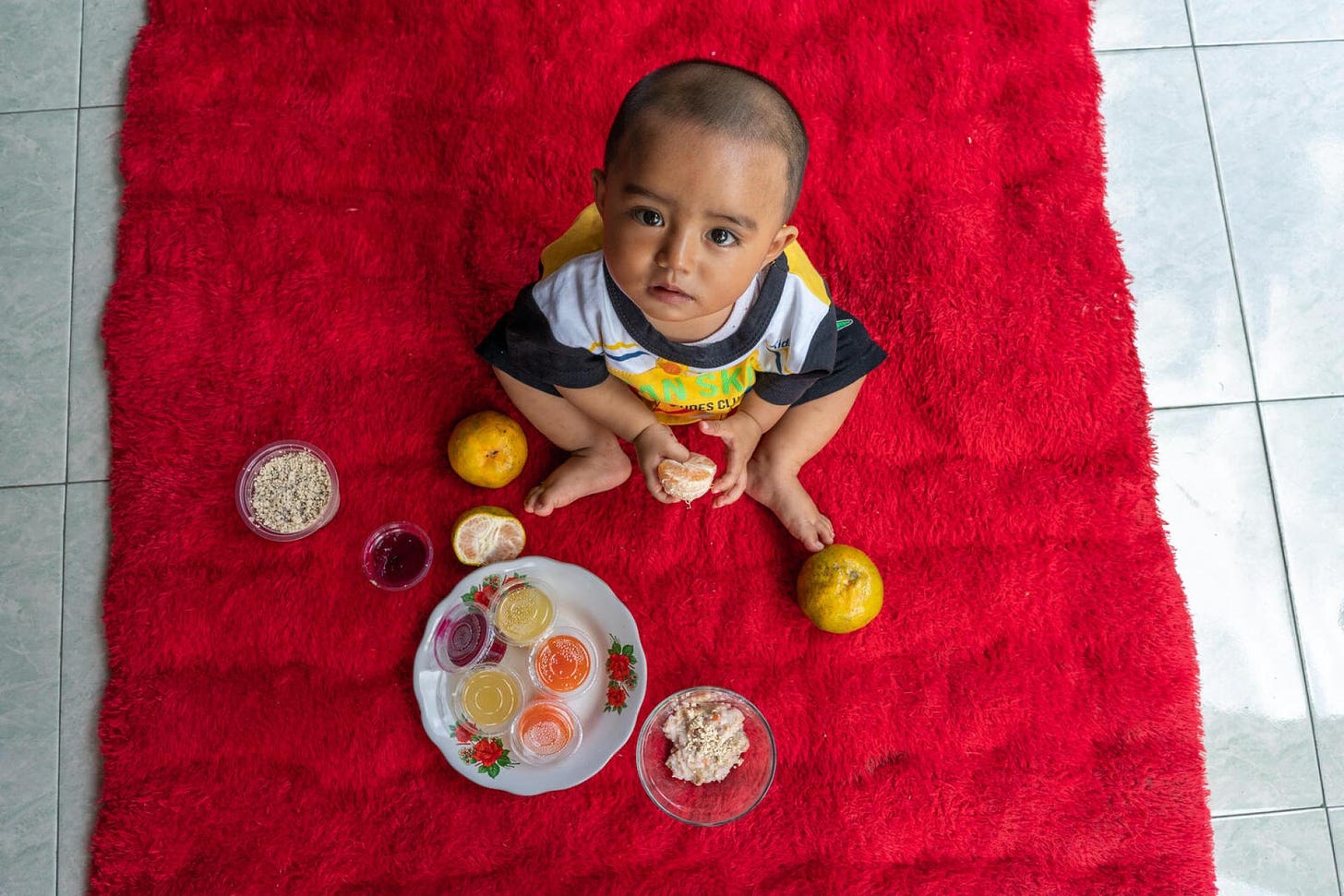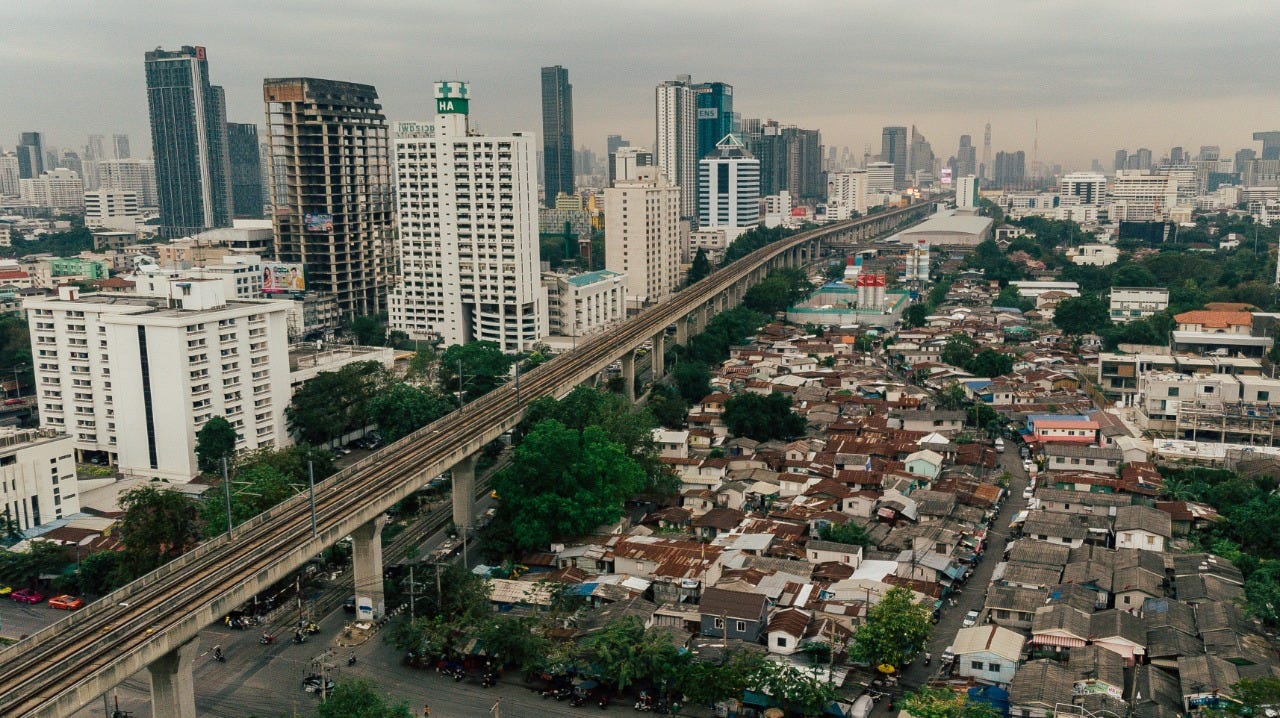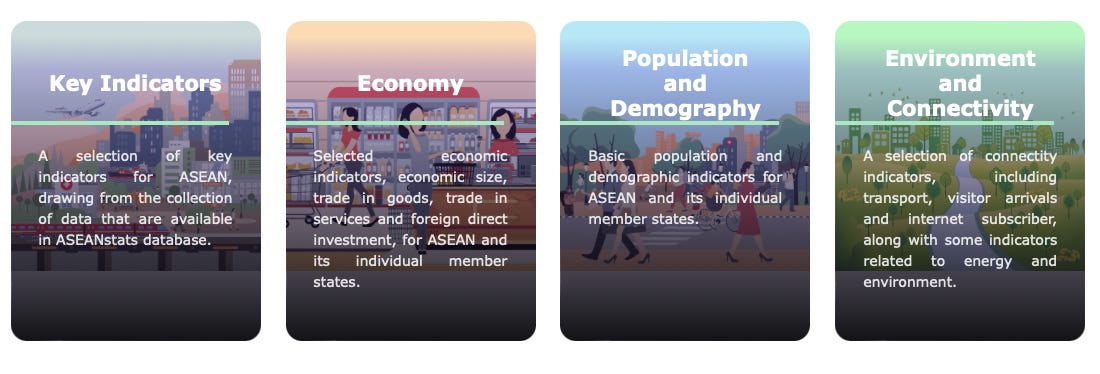River of Reports
Health and income from McKinsey, life expectancy from Statista, food and nutrition from Unicef, inequality from UNDP, income inequality from OECD, and all the new statistical data from ASEAN
UPDATE: Today, the Long Mekong Daily examines the region’s progress in health, poverty, income and inequality. It could always be better and the Long Mekong Daily provides links to the latest reports from ASEAN to give our ever growing readership a deep-dive into the health of the region as the Global North slips into recession and threatens the economic development and security of the the world’s most dynamic region - ASEAN.
A miracle of widespread progress: A 20-year journey of health and income
While it is generally known that humanity has progressed over the past two decades, our granular data reveals the true extent of that progress and where it took place. For one thing, almost half the world’s population in 2019 lived in places with living standards only attained by the top 21 percent in 2000. At the other end of the spectrum, the group of more than one billion people who lived in microregions with the lowest living standards at the beginning of the 20-year period had dwindled to a few hundred million by the end, despite increasing population. Here, we examine the trajectory of that progress across the globe.
Kaysone Phomvihane, Laos
Kaysone Phomvihane, Laos, has long served as a crossroads of trade and transportation in Southeast Asia. The French established an administrative and commercial center there, and during the Vietnam War, it was home to a US air operations center. During the 20-year period of our research, the microregion benefited from national and multinational programs aimed at integrating Laos into a regional transportation and trade hub. A bridge across the Mekong River linking Kaysone Phomvihane to Mukdahan, Thailand, was completed in December 2006, reinvigorating old trade routes. The Asian Development Bank, together with regional and national governments, have invested in infrastructure to support the reintegration of the region, including major sanitation and flood mitigation projects.
The outcomes of such progress increased Kaysone Phomvihane’s GDP per capita between 2000 and 2019 from about $1,500 to $10,000, or about 10 percent annually, while life expectancy went from 54.1 years to 65.8 years.
Read the full report here.
Life expectancy in ASEAN 2020-2025
Singapore had the highest life expectancy at birth of all the Southeast Asian countries between 2020 to 2025, with its citizens expected to live to an average of 84.07 years. Falling behind by almost 20 years was Myanmar, with a life expectancy of 67.78 years old at birth between 2020 to 2025. Interestingly, Singapore made the top ten of countries with the highest average life expectancy worldwide.
Life expectancy throughout the Southeast Asian region has been rising throughout recent years, likely due to improved healthcare systems. Improvements brought about by increasing healthcare expenditures. The East Asian region also joined Southeast Asia in displaying higher life expectancies at birth, with Hong Kong, Japan, and Macao all exhibiting life expectancies at birth of over 84 years old.
Thailand, the Philippines and Singapore are just some of the Southeast Asian governments which have released successful universal healthcare plans. As the region faces an aging population, there has been more demand for effective healthcare. Healthcare has been improving not just in the Southeast Asian region but throughout the whole Asia Pacific region, with many countries exhibiting near perfect child immunization rates, offering its citizens better healthcare from birth. With these improvements made, it does not seem surprising that life expectancy at birth has increased.
Access the database here.
ASEAN Food and Nutrition Security Report
We know that poor nutrition in infancy has a lifelong impact that affects children's development, education, and health as they grow up. We also know that poor nutrition during pregnancy and the first years of life can affect an adults earning potential, a country's GDP and a region's goals, and perpetuate the cycle of malnutrition across generations.
In 2016, an inaugural Regional Report on Nutrition Security in ASEAN was released in two volumes. These reports compiled the most recent and relevant data on nutrition, food security and related factors as well as the policy environment. This landmark effort to comprehensively document the nutrition policy and programme environment provided the region with evidence-based advocacy to support ASEAN's commitment to position nutrition and food security as a national and regional development priority.
Now, in 2023 we are pleased to share thelatest ASEAN Food and Nutrition Security Report, which provides an updated snapshot of the significant progress on nutrition in ASEAN Member States since 2016 and offers recommendations on the way forward for the next five-year period. Volume 2 of this report presents data-driven Food and Nutrition Security Profiles for each of the 10 ASEAN Member States.
Download the full report here.
Addressing the Double Burden of Malnutrition in ASEAN
The double burden of malnutrition is a common challenge facing a number of ASEAN Member States. It has hindered ASEAN’s human capital and socio-economic development, especially the development to the fullest potential of our children who are our future. It has also affected ASEAN’s overall efforts towards the realisation of the Sustainable Development Goals (SDGs). ASEAN therefore attached great importance to collectively resolving this issue, as reflected in the adoption of the ASEAN Leaders’ Declaration on Ending All Forms of Malnutrition.
In 2019, Thailand contributed to this issue by promoting an effective, collaborative and multi-sectoral approach and fostering partnerships within ASEAN and with external partners. Thailand requested the World Bank to prepare a Policy Note on this issue, in consultation with ASEAN Member States and the ASEAN Secretariat, as it is a key priority identified at the Second High-Level Brainstorming Dialogue on Enhancing Complementarities between the ASEAN Community Vision 2025 and the UN 2030 Agenda for Sustainable Development in Bangkok in 2018, to provide possible recommendations for ASEAN to consider as appropriate in accordance with ASEAN’s policy and practices. This Policy Note reviews the situation in ASEAN and recommends potential ways forward. Practical recommendations include the development of a strong surveillance and monitoring and evaluation (M&E) framework with clear targets and timeline to support ending all forms of malnutrition in ASEAN. The ASEAN Centre for Sustainable Development Studies and Dialogue (ACSDSD) in Bangkok launched in November 2019 can also support this undertaking and the development of an M&E framework.
Full World Bank Report here.
Reducing Inequality in ASEAN
Reducing inequality is at the heart of leaving no one behind and achieving the Sustainable Development Goals (SDGs). Yet inequality remains the greatest chal- lenge to achieving sustainable development.
This policy brief has been prepared based on discussions at the 6th ASEAN–China–UNDP Symposium on the SDGs, guided by the theme ‘Reducing Inequality in the De- cade of Action to Achieve the SDGs and Recovery from COVID-19 Pandemic’, jointly organised by the ASEAN Secretariat, the Mission of the People’s Republic of China to ASEAN, the United Nations Development Pro- gramme (UNDP), and the Philippines as the Chair of the ASEAN Senior Officials Meeting on Rural Development and Poverty Eradication (SOMRDPE). It outlines and elaborates on approaches to reducing inequality in the ASEAN region to achieve the SDGs. Moreover, this paper discusses specific dimensions of the differential impacts on the population which cover five key issues: jobs, social protection, education, health and food security. It concludes by discussing an exit strategy and suggests a series of exit indicators that ASEAN countries may consider monitoring.
Download the full report here.
Asia-Pacific Income Inequality 2022
Income inequality indicates how material resources are distributed across society. Some consider high levels of income inequality to be morally undesirable. Others believe that income inequality is bad because it causes conflict, limits co-operation or creates psychological and ultimately physical stresses. Often the policy concern is more for the direction of changes in inequality, rather than for its level.
Keeping measurement-related differences in mind, income inequality is high in the Asia/Pacific region compared to the OECD (Figure 4.4). In 2019, income inequalities were widest in Malaysia and the Philippines with Gini coefficients on income inequality at above 0.40, compared to the lowest at 0.28 in Kazakhstan. Over the past decade, income inequality across the Asia/Pacific economies remained around 0.35, above the OECD average (0.31). Some Asia/Pacific countries like Fiji, Georgia, the Maldives and Thailand experienced a reduction in income inequality over the past ten years, while significant increases in income inequality were recorded in Indonesia, Lao PDR and Sri Lanka.
The gap in the income distribution between the richest and the poorest 10% of the population in the Asia/Pacific economies is twice as large as in OECD countries (Figure 4.5). The gap appears widest in Malaysia and the Philippines and smallest in Kazakhstan and Timor-Leste. Over the past decade, the gap narrowed in China, Fiji, Georgia, Malaysia, the Maldives, the Philippines, and Thailand while it increased in Lao PDR, Sri Lanka and Tajikistan.
The relationship between income inequality and economic growth has stimulated much theoretical and empirical research over the past decades. However, no consensus on the strength or even the sign of the inequality-growth nexus has yet been reached. There does not appear to be a very clear country-correlation between economic growth and changes in inequalities among Asia/Pacific countries (Figure 4.6).
Read full report here.
ASEAN STATISTICAL YEARBOOK 2022
The ASEAN Statistical Yearbook 2022 provides a detail overview of a wide range of statistical areas across ASEAN including population, education, health, employment, macroeconomic, trade in goods and services, foreign direct investment, transport, tourism, agriculture, manufacturing and other social indicators.”
Download here.
ASEAN Key Figures 2022
The fifth edition of the ASEAN Key Figures which provides an overview of current situation and recent developments across ASEAN with regard to population and welfare, economy, connectivity as well as energy and environment.
Download here.
ASEAN Statistical Highlights 2022
The ASEAN Statistical Highlights (previously ASEAN Statistical Leaflet) provides quantitative information on Economy and Trade, Socio-Demography, Investment and Connectivity with comprehensive tables and various infographics.”
Download here.
The 2022 ASEAN SDG Snapshot Report
ASEAN Member States have committed themselves to take actions for delivering the 2030 Agenda for Sustainable Development. However, timely achievement of the Sustainable Development Goals in 2030 is currently being threatened by various crises such as the COVID-19 pandemic, and their observed impacts on the global supply chain. It is therefore important to closely monitor its progress towards meeting the SDGs.
This Snapshot Report for the ASEAN region aims to assess ASEAN member states’ status in relation to the achievement of the SDGs at the onset of a global health crisis in 2020. It serves as a follow-up to the baseline report earlier conducted, albeit, with limited focus.
ASEAN Statistical Figures In Dashboard
This dashboard shows development status of ASEAN, from regional and national perspective, in a visually appealing format. It includes economic, social and demographic indicators, as well as some indicators related to environment and connectivity.
Access the dashboard here.











